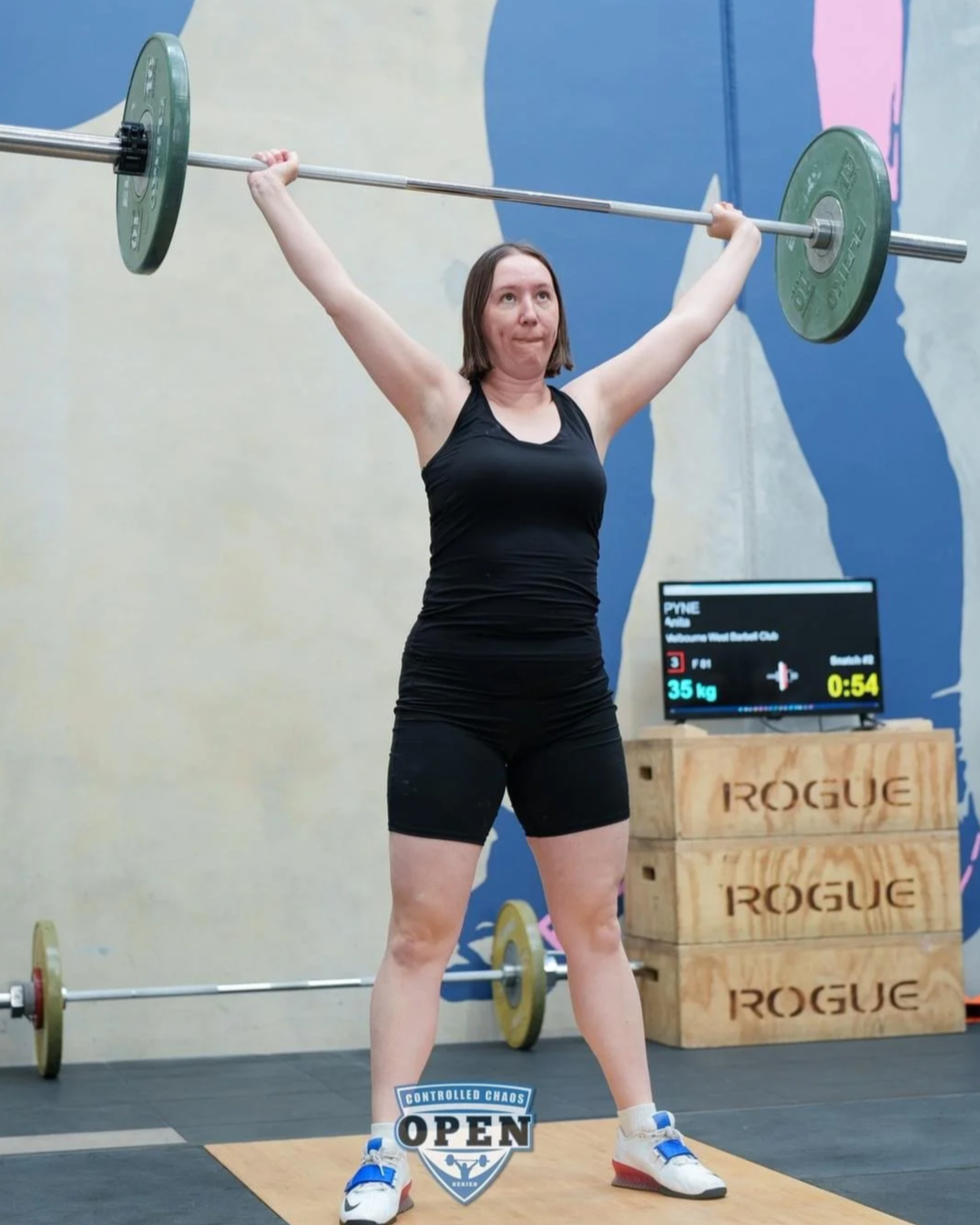Need a Break From Weightlifting? How to Train Smart in the Offseason
After a long season of competing and training, it’s normal to feel like you need a change of pace. That doesn’t mean you’ve lost motivation, it just means your body and mind are ready for something different.
The offseason is the perfect time to reset, explore new ways to train, and rebuild your base. In this blog, I’ll walk through how to approach that phase so you can return to your next season stronger, fresher, and ready to perform.
Focus on General Physical Preparedness (GPP)
This is the time to go all in on general physical preparedness (GPP). You’ve probably heard that term thrown around before. It simply means doing general training that isn’t specific to your sport but still builds your overall athletic base.
Think of it as training that supports your weightlifting without directly mimicking it. In other words, becoming a better athlete first, so you can be a better lifter later.
The reason for this is that there are many qualities that make a great athlete, that also make a great weightlifter, and when you’re in competition season, you may be too focused on the specific needs for weightlifting that the other qualities may not be trained as much.
Keep the Olympic Lifts, But Dial Them Back
I still think you should Snatch, Clean, and Jerk, just once a week. Or twice if you’re working on a specific weakness in one of the lifts. Choose variations that serve a purpose: something that helps improve a position, timing, or technique.
You don’t need to push the intensity right now. The goal is simply to stay familiar with the movements, keep the coordination and rhythm alive, without running yourself into the ground, and to just do the lifts for fun with zero pressure.
Hypertrophy Work
This is a great time to go through a hypertrophy phase, build some muscle, do some curls (summer’s coming).
But seriously, hypertrophy often gets forgotten in weightlifting, even though it’s one of the best investments you can make. More muscle isn’t just for looks, it helps with:
Strength: More contractile tissue = more potential force.
Force output: Bigger muscles can produce power more efficiently.
Injury prevention: Stronger, more muscular structures handle volume better.
Stability: More muscle helps you stabilise heavy weights overhead and in the catch.
You don’t need to bodybuild, but increasing your total training volume through accessory lifts, tempo work, and time under tension can make a huge difference later in the year. Think of it as building the engine before tuning it.
Do More Plyometric Work
Plyometrics should be in your training year-round to some capacity, but the offseason is the perfect time to increase both the frequency and intensity. In competition prep, too many high-intensity plyos can interfere with recovery or leave you too fatigued to move fast in the Olympic lifts. But now, they’re your best tool for improving explosiveness and elasticity.
There are a lot of ways to label plyos, but here’s the simple version:
Low-tier: small, low-impact hops and quick contacts (line hops, pogos).
Medium-tier: more range of motion and elastic demand (squat jumps, hurdle hops).
Deep-tier: deeper joint angles, longer ground contacts (deep squat jumps, lunge jumps), more specific to “bottom positions.”
By intensity:
Extensive: lower intensity, more reps, less fatigue.
Intensive: higher effort, fewer reps, more demanding.
During the offseason, you can handle more total plyometric work, especially deeper and more intensive variations that build speed and power through larger ranges of motion.
Add Sprint Training
I’ve started exploring sprint training more with my athletes, and it’s something I recommend adding once a week in the offseason.
Sprinting won’t directly improve your Snatch or Clean & Jerk, but it makes you a better athlete. It develops acceleration, coordination, and power. All qualities that carry over to weightlifting.
It also improves your cardiovascular fitness, helping you get through longer sessions and recover faster between sets. Combine sprint work with plyos and you’ll feel faster, more elastic, and more powerful once you return to heavy lifting.
Offseason Strength Building
The offseason is also your time to build on your strength, not just by adding plates, but by improving how you move under load.
Push your squats again if you’ve been maintaining through comp season, or spend more time on single-leg work to build balance and control. It can be a great time to shift focus to more positional strength, to further develop how you move without changing too much in competition prep.
It’s also the perfect time to strengthen your pulls. During competition prep, most lifters focus on snatch and clean pulls. Now can be the time for heavy snatch and clean deadlifts. These help you build stronger positions and a better base for future training blocks.
Don’t Forget to Have Fun
Finally, enjoy it. There’s no pressure in the offseason. Training doesn’t have to be perfect or optimised, just consistent and fun.
With social media, it’s easy to feel like every session has to be hyper-structured or perfectly periodised. But for most of us, this is a hobby we love. The offseason is your chance to enjoy movement again, rebuild general qualities, and train because you want to, not because you have to.
Conclusion
The offseason is about enjoying training and not taking things too seriously. Build the general qualities that make you a better athlete, strength, speed, coordination, and power. They’ll transfer back into your weightlifting.
Keep the Olympic lifts in once a week to maintain familiarity, move in different ways, and explore new stimuli. It doesn’t have to be perfect, and it won’t be it just has to keep you moving forward.
If you’re training, you’re improving. It’s not about doing everything right, it’s about keeping the needle moving.
—MWBC Team

